[ESP/ENGL] Temporada de tortuguitas

Today I extend a big greeting to the Amazing Nature community. And yes, as its name says, nature is incredible, surprising, fruitful and diverse; and I wanted to talk about one of those expressions of diversity today in this post, and it is precisely about some incredible animals known as morrocoyes or tortoises land.
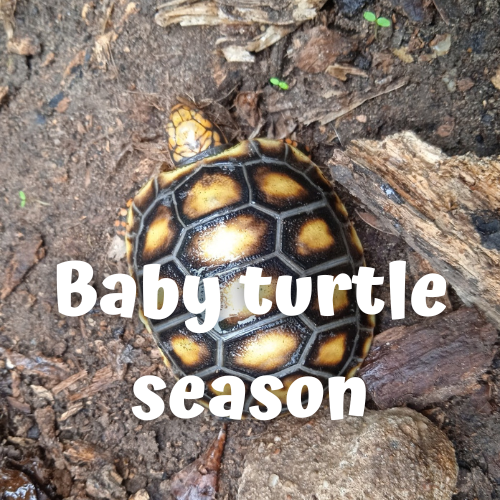

Morrocoyes (Chelonoidis carbonaria), are very common animals in Venezuela. I don't know if they will have that custom in the rest of Latin America, but in my country, it is considered good luck to have morrocoyes in houses, since it is believed that they protect the inhabitants, and the houses themselves, from bad influences, and At the same time, if the morrocoy has a shell with 13 pints or more, then it will serve as a magnet to attract prosperity to the home. Previously I have talked about these incredible and long-lived animals, since I have several on my backyard, and every year they reproduce regularly, starting the egg hatching season in the month of May; however, in this year 2022, it started during the first week of June. If you want to read other posts related to these tortoises, you can view them below:

Last Wednesday the 8th, as usual I went out to the lot, and there I found the first tortoise or baby morrocoy of the season. Unfortunately he was dead. I saw it in the middle of the road, and its stillness surprised me, so I picked it up to examine it, noticing its absence of life. Everything was dirty, something that does not happen when they are alive, since they are always free of dirt. Turning it on its side, I noticed that five scales or bony plates were missing from its shell; which allowed me to infer that he had been attacked by a rodent, (in the lot there are rodents, rats, mice, although the family of opossums that live there control them and my cats too). Then we proceeded to make a hole in the ground and deposit the little body inside, to bury it. I hope this little dead animal is not a bad omen.
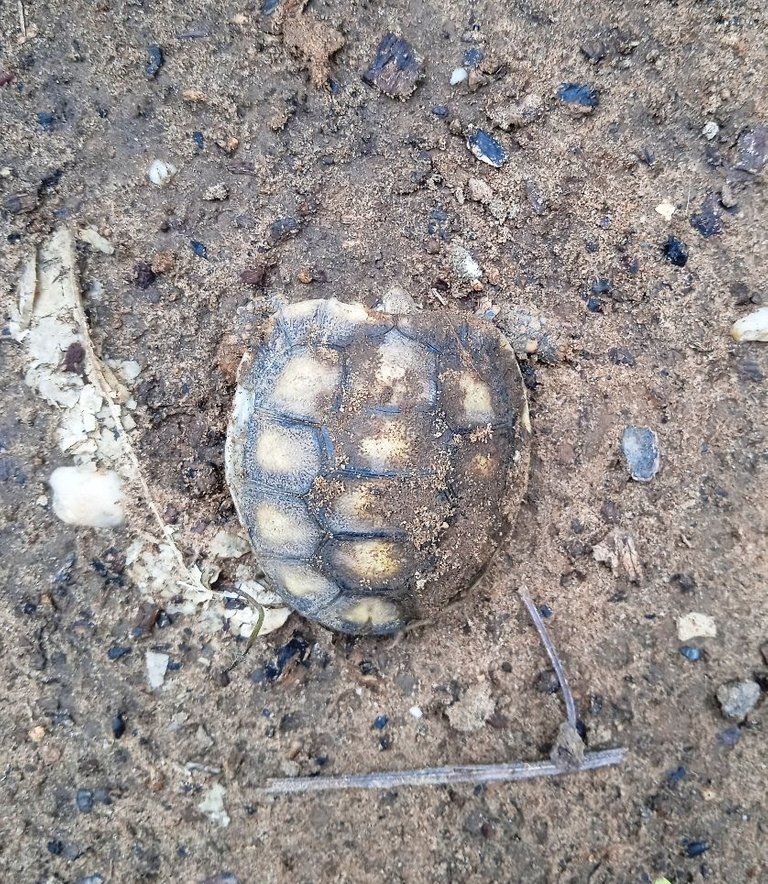
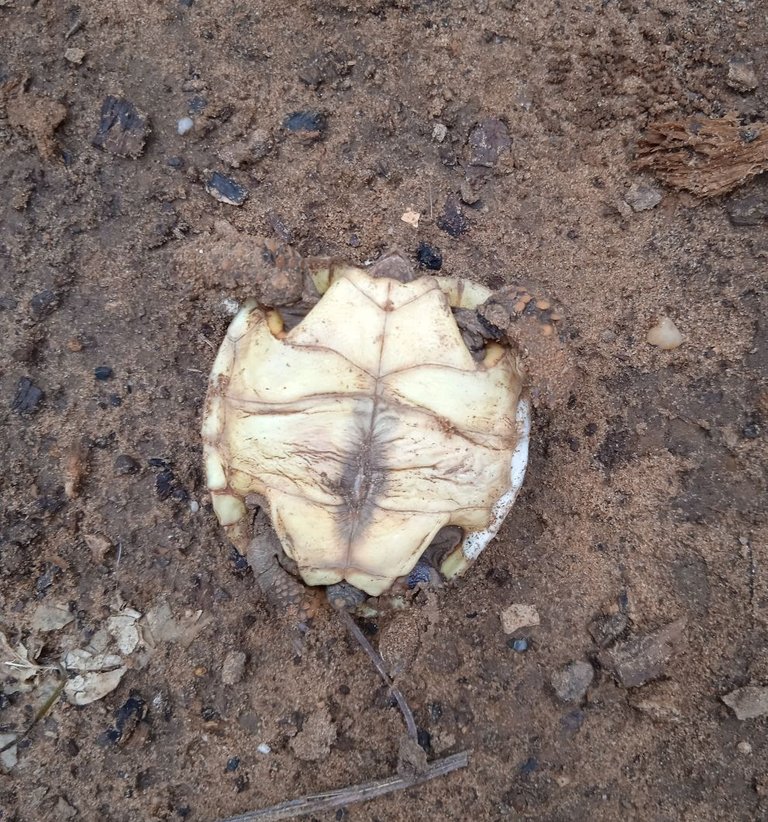


A week later, on Tuesday June 14, I found two more hatchlings. These were healthy and beautiful, one larger than the other, so I presume that one was born before. I placed them in a rubber with plants so that they were protected and not accidentally crushed
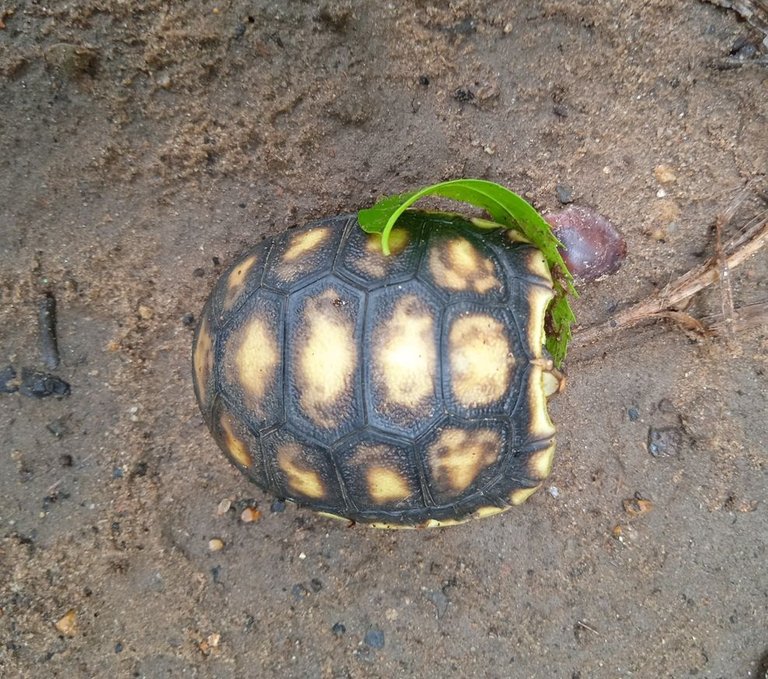
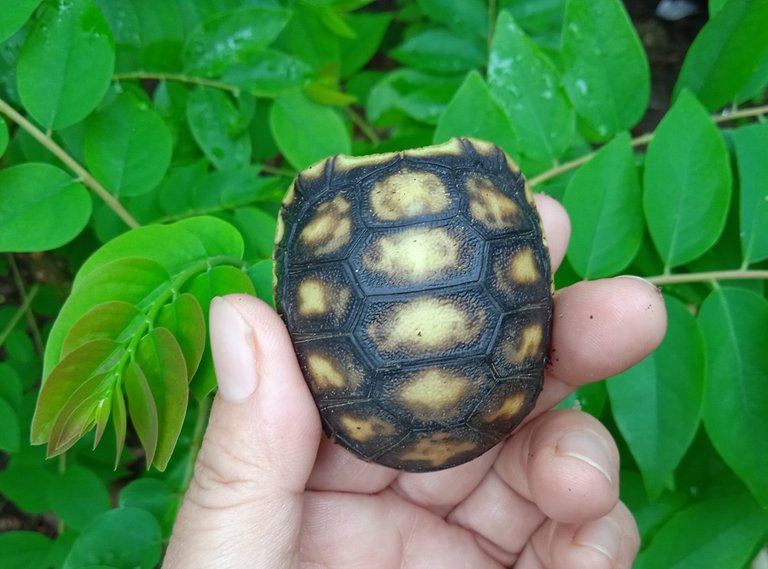
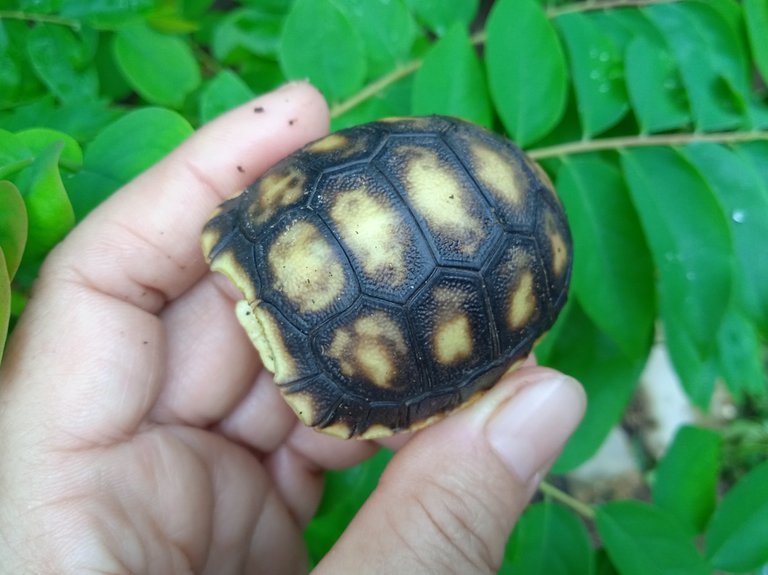
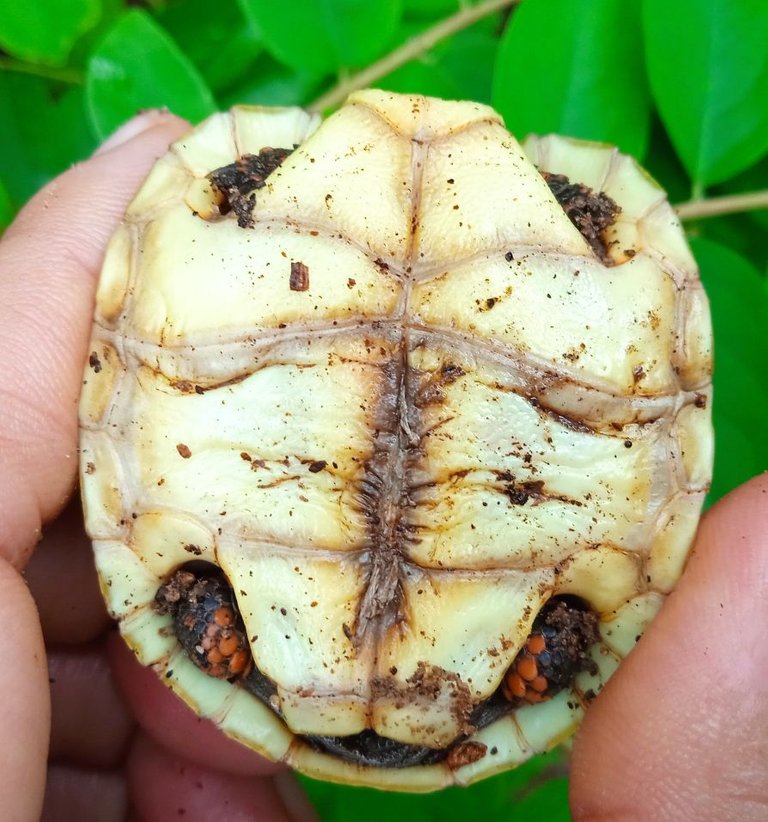

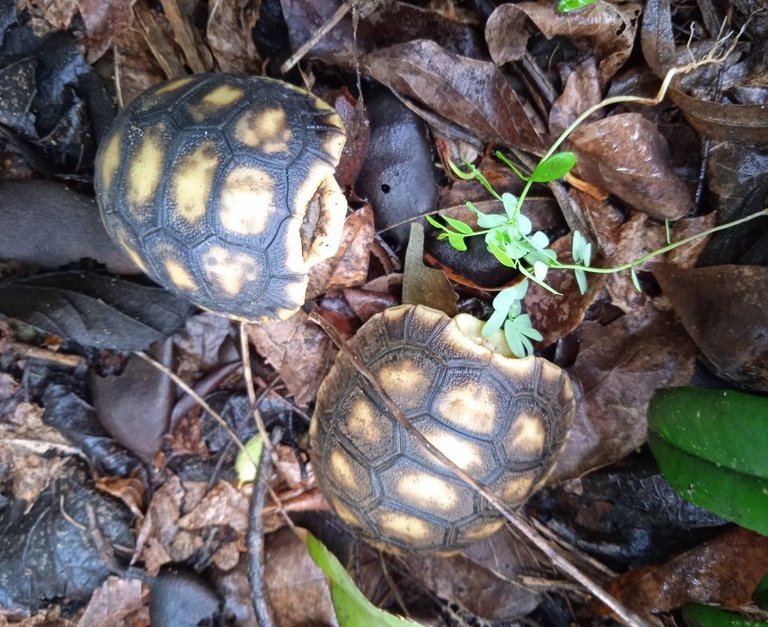

By Monday the 20th, I found another morrocoy baby, also alive and rosy, eager to live, tiny but perfect, as you can see here. I still cannot say what sex these animals are, because they still do not have the anatomical characteristic that distinguishes them, which is that males have a sunken or concave abdomen, which allows them to copulate with females, while in females the abdomen is absolutely flat.
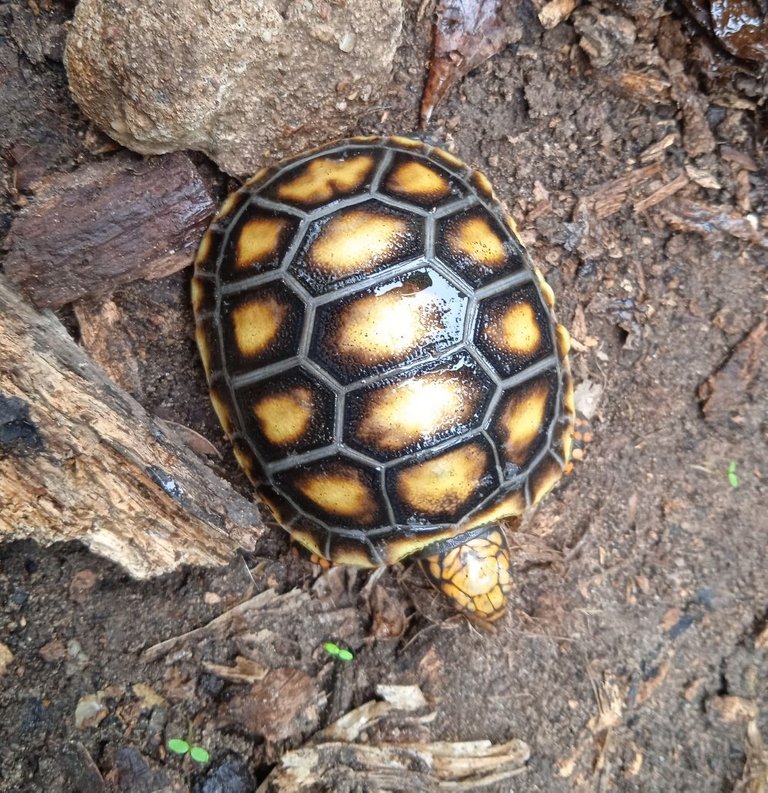
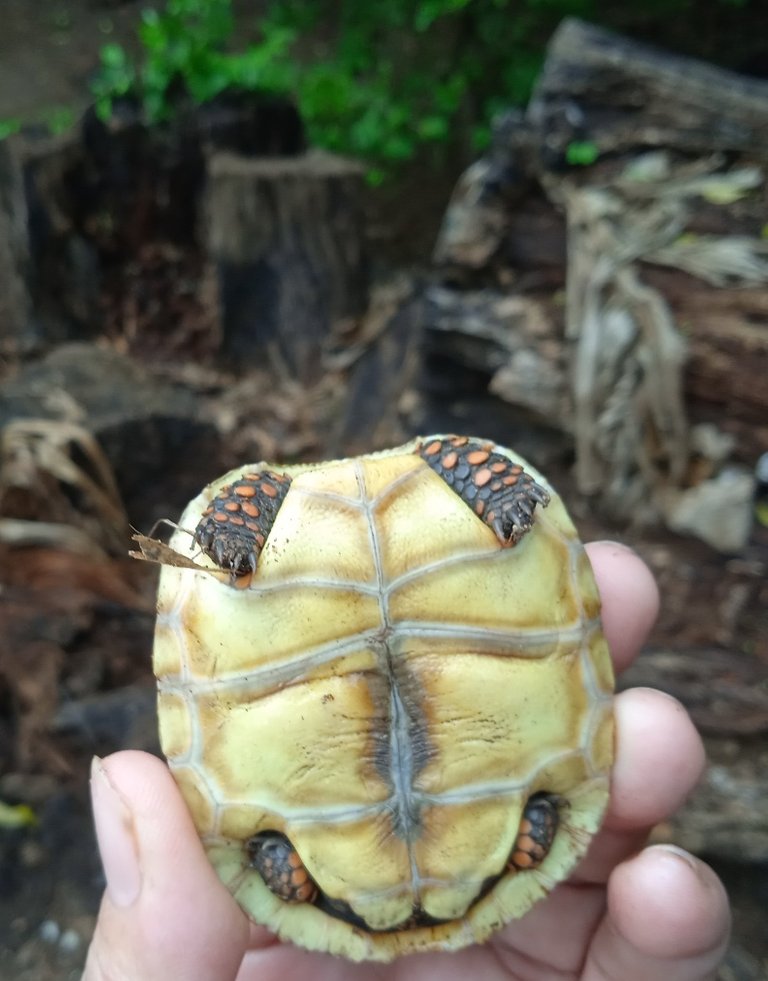
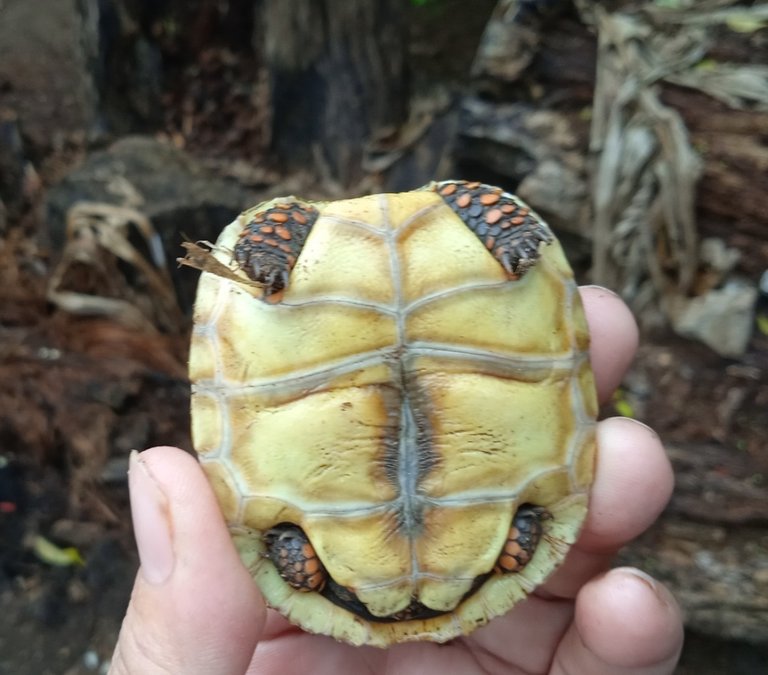
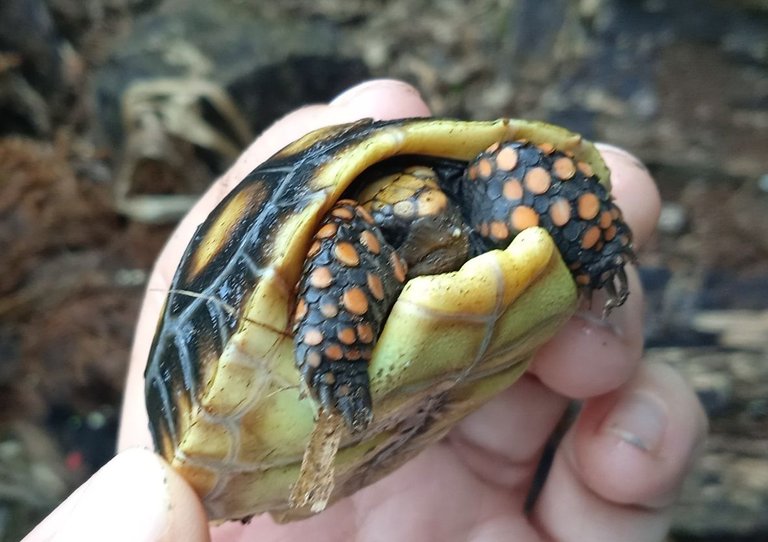

Quería hacer hincapié en algo que considero importante: Si bien es cierto que en otro post (que ya corregí y edité), he dicho que estos animales a esta edad comen de todo, es un error y lo pude verificar el pasado año, cuando perdí dos bebés morrocoy por alimentarles con pasta y con masa de maíz, pues murieron reventados. A esta edad su sistema digestivo es muy joven, y no tolera nada más que pequeñas hojitas y vegetales picaditos o rallados finamente, ya que no tienen fuerza en sus pequeñas mandíbulas para cortar el alimento, así que es preciso darles porciones de vegetales y hojas, menudamente picados o rallados por el lado fino del rallador. Este régimen debe durar al menos unos seis meses. Luego se les siguen suministrando vegetales, pero en trozos más grandes. Es recomendable darles lechuga, alguna fruta suave, hojas que les agraden comer, como por ejemplo las de amaranto (pira, bledo blanco) (Amaranthus viridis), entre otras, que sean suaves y aceptadas por ellas.
I wanted to emphasize something that I consider important: Although it is true that in another post (which I have already corrected and edited), I have said that these animals at this age eat everything, it is a mistake and I was able to verify it last year, when I lost two Morrocoy babies for feeding them pasta and corn dough, because they died of blown away. At this age their digestive system is very young, and they do not tolerate anything more than small leaves and finely chopped or grated vegetables, since they do not have the strength in their small jaws to cut the food, so it is necessary to give them portions of vegetables and leaves, finely chopped or grated on the fine side of the grater. This regimen should last at least six months. Vegetables are then continued, but in larger pieces. It is advisable to give them lettuce, some soft fruit, leaves that they like to eat, such as those of amaranth (pyre, white pigweed) (Amaranthus viridis), among others, that are soft and accepted by them

Son animales de sangre fría, reptiles, por lo cual puedes verlos llevando sol para calentarse corporalmente.
Es un mito que no toman agua, sí toman a diario y mucha.
Son animales con una memoria bastante buena, pueden recordar cosas luego de más de una década.
Pueden reconocer personas y atienden llamados, al igual que un perro.
Caminan rápido, es incierto que son lentos.
Se ayudan entre sí, pues he visto morrocoyes que están patas arriba y otro se acerca para ayudarlo a que pueda voltearse.
Una vez estando grandes, su dieta es amplia, pueden comer gran variedad de alimentos, son omnívoros, pero también tienen sus gustos particulares, cada individuo puede tener preferencias alimenticias.
I wanted to point out, from my personal experience, some general characteristics of tortoises or morrocoyes, and they are the following:
- They are cold-blooded animals, reptiles, so you can see them wearing sun to warm their bodies.
- It is a myth that they do not drink water, they do drink daily and a lot of it.
- They are animals with a fairly good memory, they can remember things after more than a decade.
- They can recognize people and answer calls, just like a dog.
- They walk fast, it is uncertain that they are slow.
- They help each other, because I have seen morrocoyes that are upside down and another approaches to help them turn around.
- Once they are big, their diet is wide, they can eat a wide variety of foods, they are omnivores, but they also have their own particular tastes, each individual can have food preferences.

Salvat Editores, S.A. (1976). Enciclopedia Salvat. Tomos 1, 3, 5, 8. Barcelona, España.
Todas las fotos de este post son de mi autoría y fueron tomadas con mi teléfono Xiomi REDMI 8 A // These photos are my own, and were taken with a Xiomi REDMI 8 A phone
Los divisores son cortesía de @eve66 quien comparte bellos diseños que embellecen el maquetado de nuestras publicaciones. // The dividers used are courtesy of @eve66 who shares beautiful designs that embellish the layout of our post.
En caso de que se requiera utilizar el contenido o las imágenes de este post y de mis otras publicaciones, agradecería que se hiciera referencia a mi autoría (Fabiola Martínez) y se citara el enlace correspondiente. Gracias. // In case it is required to use the content or images of this post and of my other publications, I would appreciate if you could refer to my authorship (Fabiola Martínez) and cite the corresponding link. Thanks.

 Delegations welcome!
Delegations welcome!

Congratulations @sirenahippie! You have completed the following achievement on the Hive blockchain and have been rewarded with new badge(s):
Your next target is to reach 45000 upvotes.
You can view your badges on your board and compare yourself to others in the Ranking
If you no longer want to receive notifications, reply to this comment with the word
STOPSupport the HiveBuzz project. Vote for our proposal!
my god, they are so little and cute ☺️ ! I just love those animals... Your pictures are great and I really enjoyed how you're talking about them, can feel the care <3
Hi @anttn, I loved your visit to my blog and my backyard garden. Yes, these animals are very small, in fact, I have found them as soon as they hatch and they are even smaller. They are intelligent animals, even if they don't look like it. Best regards.
It's so obvious you know much about them and even what they eat and don't eat.
I haven't even touched one before 😅😅
Also, I love their image views...you've got a nice shot
Hi @tkrypt! Your visit to my post is nice. These animals at this age are very fragile, but beautiful, then they are somewhat stronger, when they grow up. thank you very much for your opinion on the photos! Greetings.
You're most welcome
Please what's their life span?
They can live in captivity and with care, many decades, even up to 80 years of life, and exceptionally, 100 years. Of course, in the wild they last less. My family had one that according to my grandmother was 60 years old, one day it disappeared from the yard, apparently it was stolen.
Wow!!!! The life span is so massive 🤭🤭🤭🤭
What a lovely creature 😍😍
Hello friend, a hug! I'm confused about something! The information that you show us is in those links where you had previously written about the species? I mean, for this post you didn't have to investigate anything online? Did you get the information from your other posts? I'm a little confused with the way you place the bibliographic references
Hi! A hug for you too! Good afternoon, what an honor to have you visit my post. Well, my friend, I'll tell you something, if you review my previous posts, which correspond to the last season, that is, 2021, its content is absolutely different from what I present in the current one, because this season 2022 is a new one.
If you read this post, I highlighted that I had edited a previous post, and it is this: post: https://peakd.com/hive-196708/@sirenahippie/espengl-bebes-morrocoy-update, why did I do this? Because in it I posted pictures and put a small video, where the baby morroccoys were eating corn dough, and there was a text that said they could eat pasta; which, according to my experience of the past year, it hurts them when they are so young, they die doing it.
I have had these animals in my house for about 25 years, in fact, these animals (which are very prolific), are my family's inheritance. Since about 3 years ago, a little before the pandemic began, I dedicated myself to observe them more closely, and in view of the overpopulation in my backyard, I proceeded to give them to responsible people to take care of them; from there, since I started in Hive, I began to share content related to them, because I consider it is important to educate the general population about the treatment and love they should give to the rest of creation.
I know well, because of my university education and my journey as a curator in Hive, that you cannot use other people's material without making reference to the source, and I am also very clear that in Hive you are not allowed to repeat content, that is, you are not allowed to recycle or repost; and this I do not need to do, because fortunately I have a constant source of information in my own home, in my backyard. There I can take pictures as many times as I want, and make observations of the behavior of these curious animals, so if there is the slightest suspicion that I have used old content, you can be sure that this is not the case.
I have decided that every year I will document the morroccoy season, as it is a way to systematize my knowledge and make it available to other people. The same happens with the species of pollinators that I have in my home, read melipona bees, Apis, bumblebees, butterflies; I will always make content referring to them, because for me they are important, and I consider that it is appropriate to inform the readers about the work that these wonderful insects do. If I were to recycle content, it would be foolish of me to quote previous posts in new publications.
When I make a new post on a previously discussed topic, I consider it appropriate to refer to my old posts. You can see this in my series of sayings, as you can also see in my series of bees. By the way, in both series I use information from documentary review, both primary and secondary sources, which when caso, I quote verbatim according to APA standards. When I obtain input from other people's texts, I never paraphrase, I just read the information to make my personal analysis of those data; and I also proceed to cite the source used.
I like to be impeccable in my work in Hive, because as community leaders, we are supposed to set an example, that is, to do an excellent job in order to demand the same from other users.
I hope you find this information useful. If you have any questions or concerns, do not hesitate to ask me. Best regards. Once again, thank you very much for your visit, I love this community. Hugs!
Note: By mistake, I answered you previously with the administrator account of my community, I deleted and now I answer here, with my personal account.
can you reach our discord to help you with something?
Please, give me the link
https://discord.gg/G9zK2UBD
Pero que guapurassss, ¡Me encanta! 😍
Yo cuando era chiquita tenia unas tortuguitas de agua, algo parecido a lo que tu tienes, me la pase chevere jugando con ellas jajaja
Saludos 😄
Feliz fin de semana 🌼
MALOMI TV 😊
Hola @malomi, ¡que bonito comentario! Muchas gracias por visitar mi solar. Las tortugas son hermosas, al igual que los morrocoyes, y aunque no sean tan expresivas como los gatos y los perros, tienen sentimientos y comprenden muchas cosas, son seres muy inteligentes. Me dio gusto verte. Saludos.
Se nota que te agrada mucho la naturaleza y amas a tus morrocoyes y eso me parece muy agradable, espero te encuentres super bien 🤗 al igual que tus dulces hijitos 🤗💚
Recompensamos comentarios valiosos. Estimulamos el compromiso en Hive.
💬 Si te gusta nuestra labor, considera votar este comentario. 💬
Ngl, the first turtle’s shell looks like topaz.
Hi @allama. What a beautiful comparison! Thank you so much for your visit to my post. Have a beautiful Sunday.
Cheers 🥂.
due to your scientific contribution you have been voted by our DNA account, your post meets the requirements requested by our community keep up the good work!
We appreciate your work and your post was manually curated by @none! from the DNA team!
Reach us on Discord to learn more about the project!
Thanks so much! It's a honor, thanks for your support. Greetings!